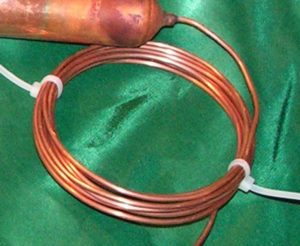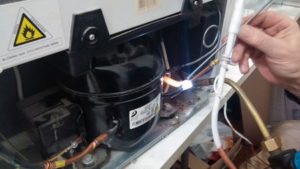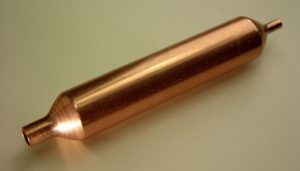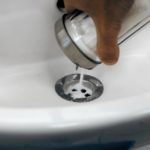How to clean the capillary tube in the refrigerator
 How to diagnose a clogged capillary tube? The circulation of the refrigerant, thanks to which refrigeration equipment performs its functions, is sometimes disrupted. The cause may be a blockage in the capillary tube. The following indirect signs will help to recognize the problem:
How to diagnose a clogged capillary tube? The circulation of the refrigerant, thanks to which refrigeration equipment performs its functions, is sometimes disrupted. The cause may be a blockage in the capillary tube. The following indirect signs will help to recognize the problem:
- the refrigerator compressor works almost continuously, and ice forms in the chamber;
- lack of cold in the chamber during normal operation of the freezer;
- operating equipment does not produce cold (as a rule, when completely clogged, which rarely happens);
- no cold is produced, but after a couple of hours of inactivity without power supply, full operation resumes for a short period of time.
A more thorough check involves paying attention to the condenser, which is a tubular grille on the back wall of the refrigerator. Its temperature state is a good indicator of the formation of a blockage. If one part of the condenser is very hot, and the other is at room temperature, then this indicates a violation of the movement of freon.
Important! It is worth remembering that the above signs may indicate not only a clogged capillary tube, but also a failure of the evaporator.
The content of the article
Step-by-step cleaning instructions
Required tools and materials
For work you will need the following tools and devices: pliers, a soldering iron with silver-containing solder (or a portable gas welding station), a pipe cutter, a compressor, a hydraulic press, a nitrogen cylinder. Materials you will need: a piece of hollow copper tube, a syringe, solvent, refrigerant, a new filter.
Cleaning nuances in different models of devices
 Since some users have older models and there are so many new ones on the market, the contents of the cooling system may vary. Differences in the filter filler and pipeline material lead to the fact that the nature of the capillary tube clogging is also different. This fact determines the approach to cleaning.
Since some users have older models and there are so many new ones on the market, the contents of the cooling system may vary. Differences in the filter filler and pipeline material lead to the fact that the nature of the capillary tube clogging is also different. This fact determines the approach to cleaning.
One method involves blowing nitrogen in the direction opposite to the movement of the refrigerant. The capillary element is first cut out from the general system. When using a solvent, you can remove the blockage in the form of a dark powder, small flakes, or a gel-like mass. It may be possible to cope with the most complex plasticine-like cork.
Another method involves soldering it into a compressor system and pumping it under high pressure (up to 25 atmospheres). Depending on the complexity of the contamination, the procedure is repeated many times.
Third way consists of removing the evaporator and placing it in a container with high temperature water. The capillary tube must be purged. After completion of the work, the elements are returned to their place, evacuation is carried out and freon is charged. This can only be done with a compressor!
Important! If cleaning does not bring the desired result even after several attempts, then there is an irremovable blockage in the system. In this case, a complete replacement of the capillary tube is necessary.
What happens if you don’t clean the refrigerator capillary tube?
Firstly, during the operation of refrigeration equipment, a picture of the increasing signs described above will be observed, i.e. it will not function properly. Secondly, a constantly running compressor will sooner or later fail completely. And even the most experienced master will not be able to determine when exactly this will happen. Therefore, at the first obvious signs of blockage, it makes sense to start cleaning.
Possible difficulties when doing DIY cleaning
 According to statistics, in approximately 90% of cases, in addition to cleaning, the filter will need to be replaced. The reason is simple - most of the blockages occur due to poor quality work. If the old filter is left in place, then there is a high probability of repeated disruptions in the circulation of freon. Another difficulty is the need to charge the system with refrigerant. Without vacuuming it, the procedure will not be possible.
According to statistics, in approximately 90% of cases, in addition to cleaning, the filter will need to be replaced. The reason is simple - most of the blockages occur due to poor quality work. If the old filter is left in place, then there is a high probability of repeated disruptions in the circulation of freon. Another difficulty is the need to charge the system with refrigerant. Without vacuuming it, the procedure will not be possible.
In what cases is the help of a professional master needed?
Without experience working with refrigeration equipment and when faced with the difficulties mentioned above (changing the filter, refilling freon), it is quite risky to undertake all the procedures yourself. We are talking not only about the breakdown of the entire refrigerator, but also about your own health.
Without knowing the safety rules and basic functioning of complex technical equipment, you can injure yourself. That is why it makes sense to turn to specialistswho will immediately understand the causes of the breakdown and eliminate them at a high professional level.




